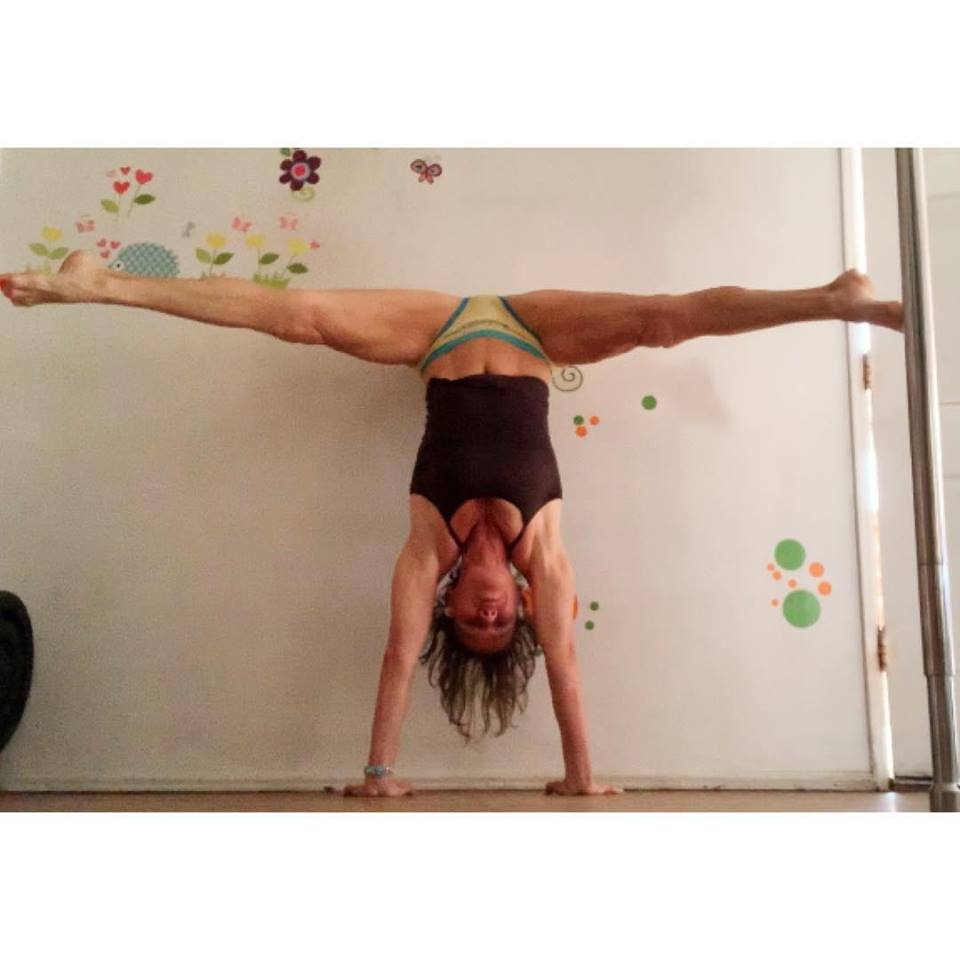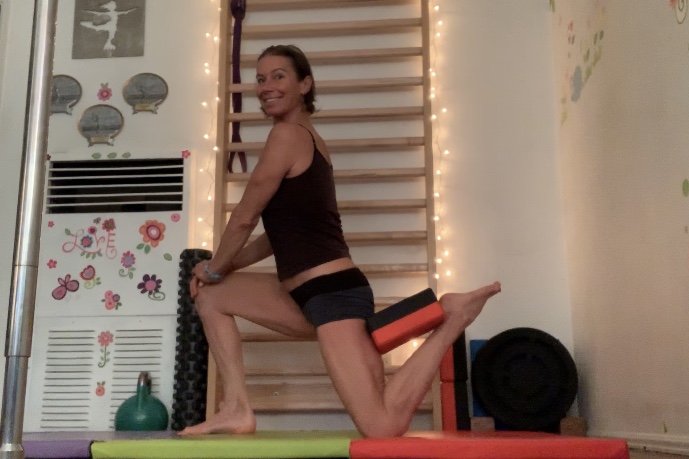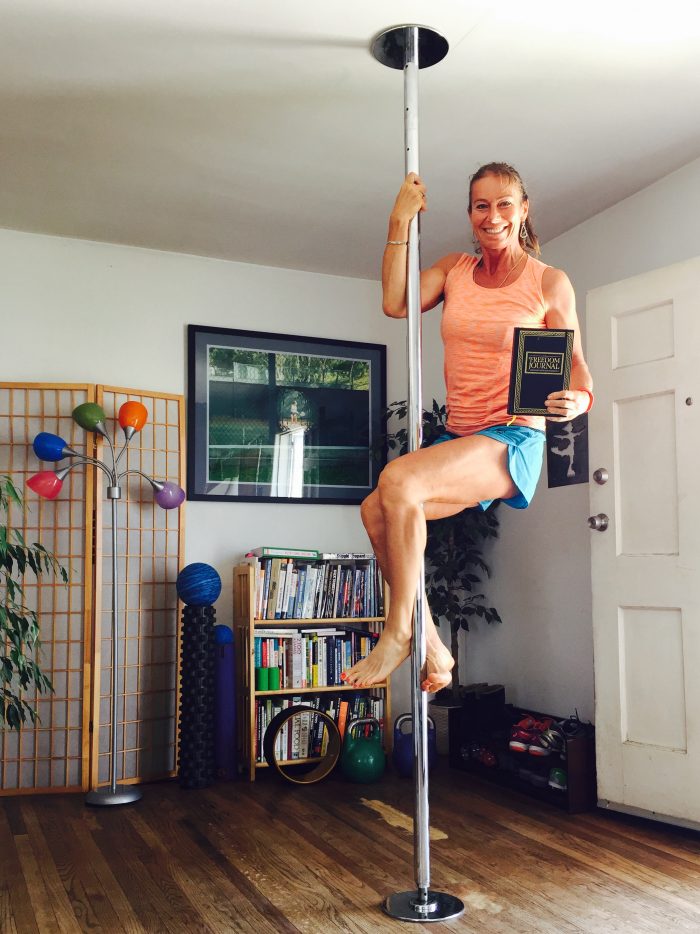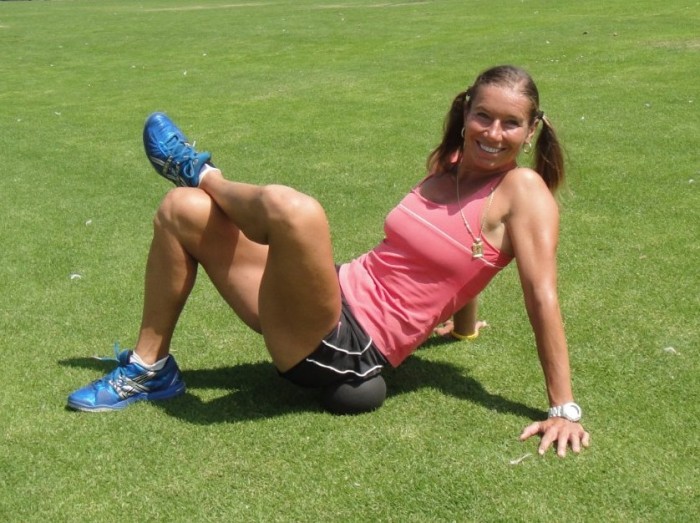I was playing tennis every day, seven days a week. And do the fitness training and injury prevention several times a week just to be able to play so much. Life was good, and I loved being on the court. Until one day in spring 2016—and I don’t even know how and why it happened—I decided to try a pole (dancing) class.
To this day I still cannot explain why I did it because I have never been even mildly interested in such things. Needless to say, from that day, my life has changed fully.
As strong and fit and athletic as I proudly thought I was, suddenly seemed to be a big delusion. I was not able to hold myself on the pole just to hang there and spin, not talking about doing any graceful movements.
I was almost depressed and disgusted with my non-athleticism, and I decided on the spot that I need to learn this athletic endeavor and bought a package of six beginner classes. And the self-discovery and injury prevention beyond limits started.
After only a few weekly sessions, my both shoulders were strained beyond belief. My six-feet tall, heavy body spinning around the pole was causing some serious forces that my shoulders and latissimus was not strong enough to handle. I was so strained that I was not able to lift my arms above the shoulder height, to undress or scratch my back. It took all my injury prevention skills of myofascial release and stretching to “fix” myself in six days, so I can take another class on Sunday. This was lasting for about 3 months. Then I could lift my arm above my head to wave at a friend without moaning and groaning.
All this time, I was not able to touch my tennis rackets. Honestly, it was not even on my mind. I was in a survival mode. And obsessed… I need to get strong. And actually, not just strong, but also I need to restore a full mobility in my shoulders and hips, and pretty much in all my body. I thought it was pretty ok before, for sure above average, but this pole journey revealed some unpleasant things to me.
The quest to master a handstand (which I have been scared of my entire life of 50+ years), middle split, front split and thoracic bridge (aka back bend) has started. I purchased special programs of gymnastic strength training for adults, and under the coaching of the best of the best, the Olympic gymnastic coach Christopher Summer and his team, I began my journey to become gymnastically strong and flexible.
It’s been 1.5 years now. Finally, now I feel like everything is getting together. I am somehow strong, much more flexible, I found new muscles that my body didn’t even know how to use and first now I have become strong enough that I can safely practice my pole skills and enjoy the process. Until now, it’s been just a road of frustration, sheer determination, willpower, and 100% solid work ethics.
Do I miss playing tennis? Yes, a little, but also no, not too much, because I have grown as an athlete and as a performance and injury prevention coach. Because… guess what? The tennis players need to raise the arms overhead, and if you don’t have a full range of shoulder flexion, your body (often the lower back) will compensate. You don’t even feel it. But stuff will happen over time. Months, years, decades, but it WILL happen. Now, I have new tools in my repertoire for my clients and students to make them even better tennis players.
Obsessively focusing on
- the shoulder mobility and strength in the full range of motion—flexion (above the head) and extension (behind you).
- full mobility of the hips, in the internal and external rotation, strong gluteus medius, strong hip-flexors… (Have you ever tested how strong your hip-flexors are? You may be surprised that there is NOTHING… no gas in the tank) See this video and test yourself. Lean forward as much as you can. You may cramp up in the first repetition if you even can do the first repetition.
- strong and flexible wrists, fingers and forearms.
- full ankle mobility and strong feet
All this is besides all the basic stuff like hamstring, glutes, and quadriceps stretches—these should be your little daily maintenance, just like brushing and flossing your teeth.
These were my little lessons from me to you, from the pole to your tennis racket. To summarize it—that one thing you need to remember for your athletic longevity is the following:
You need to restore your mobility FIRST before adding strength in that new full range of motion.
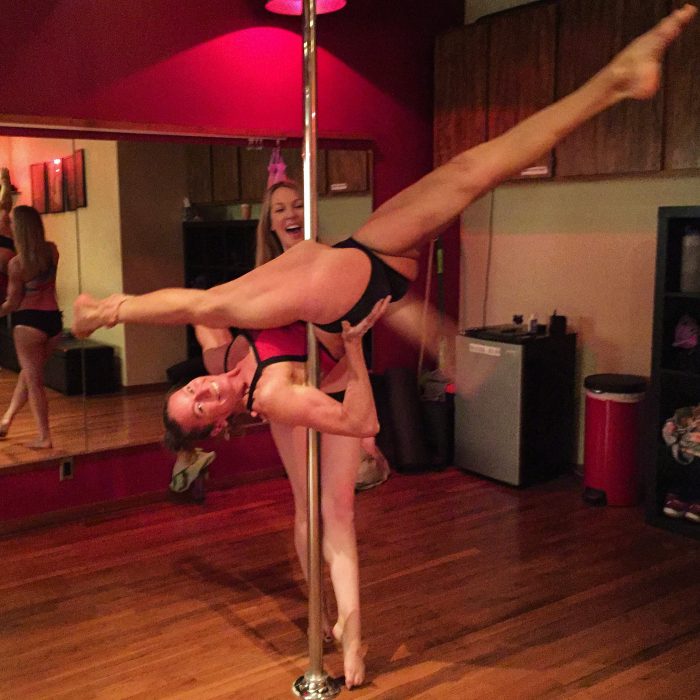
Now a few fun facts about pole dancing for your entertainment
…in case you didn’t know… (I didn’t)
1. Pole dancing has just been recognized (October 2017) as a sport, in lines with other Olympic standard sports like gymnastics, ice skating or diving.
2. It could be included as an Olympic sport. 2024?
3. Men do pole dance! And they are incredibly amazing. A lot of Russian and Chines men who are tip-top athletes.
4. Most pole dancers, regardless of age, are in the best shape of their lives… (Yes, I definitely agree with this one.) You need to be strong and lean because you don’t want to drag any dead weight (fat) upside down and around the pole.
5. There are many styles of pole dancing: sport (gymnastic tricks in a vertical plane), art (contemporary or ballet-like beautiful dance movements) and sexy (often in heels, and often what everybody thinks when they hear “pole dancing”)
6. You need a lot of skin to grip and stick to the pole. Yes, that’s why you see minimal clothing on the pole athletes: the more skin, the more you will stick to the pole and do them over safely.
7. It can be dangerous without a proper training… (yes and I know that ? ). You also bruise a lot when you learn new moves. It is very painful. Lots of moves are performed inverted, upside down, and you need to make sure not to fall on your head and break your neck. Unfortunately, such injuries have happened.
8. You need tremendous upper body strength (shoulders, latissimus, trapezius, hands, forearms, and the core). But it should not stop you if you don’t have it (like I didn’t ? ), you will build it over time.
9. You can have a pole in your living room, doesn’t take much space, and you can always do a good workout.
10. It is not always sexy. It can actually be very un-pretty when you practice new moves and tricks (I feel less than graceful most of the times ? )
11. It can be emotionally healing and relaxing. Just like any form of dance. You may not even climb the pole, just dance around it. The pole is your partner. It’s fun and you get a good cardio in as well.
If you are thinking about starting to focus on your flexibility and mobility during this winter season, you will find many great articles on this website. If you want to have the basic stretching and myofascial release routines at your hand in a small convenient format, get yourself (or your friends) the book “Tennis Fitness for the Love of it” on Amazon. And remember, enjoy the process, there are no shortcuts in improving your mobility. Think long term, but you will get there, if you stay consistent. Be awesome!
.

